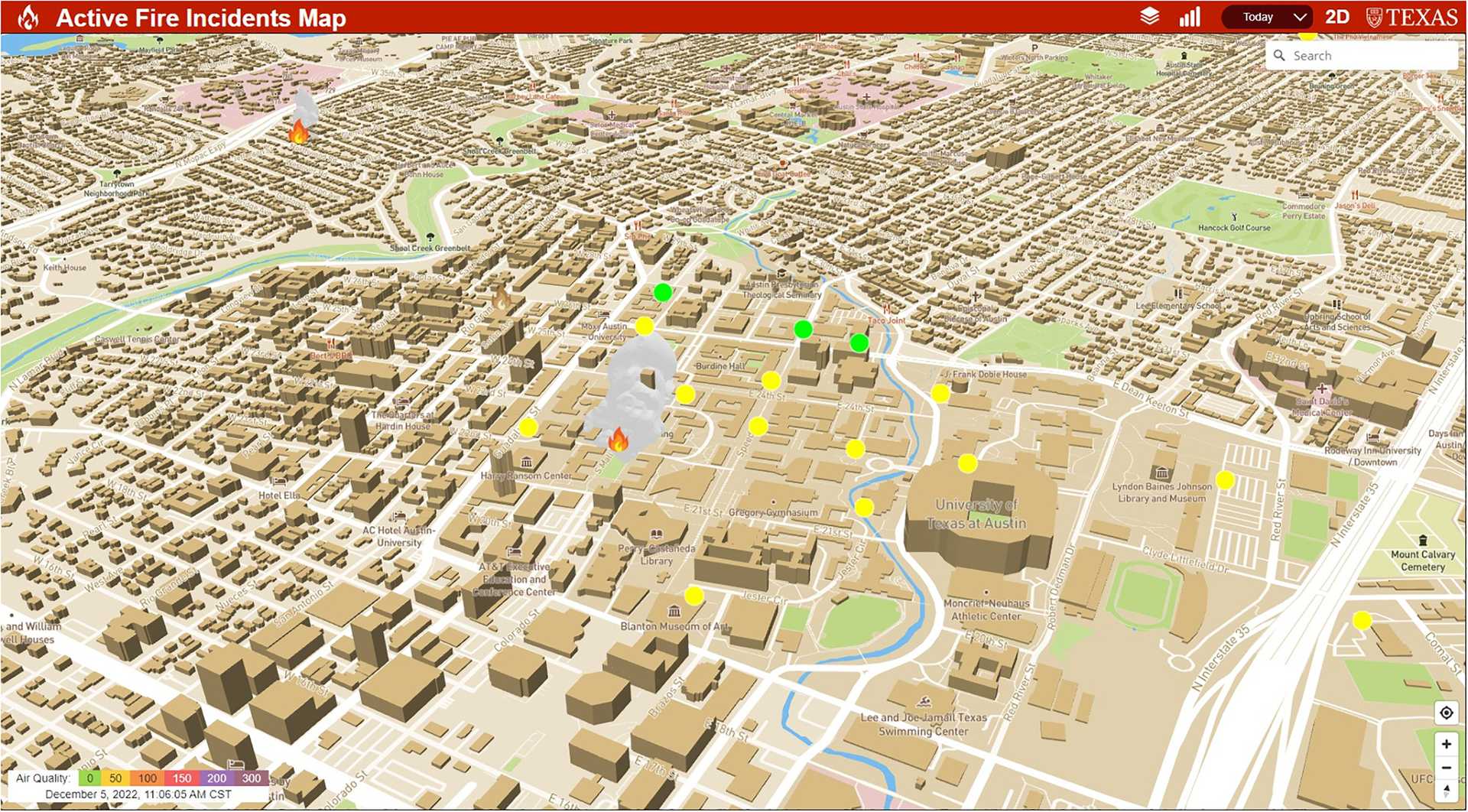
Smoke plume modeling
Many cities and urban regions have sprawled into natural areas with growing wildfire risk. FireCOM is a "digital twin" architecture designed to monitor and predict the impact of urban fires in real-time. Developed at the University of Texas at Austin, this tool uses both 2-D and 3-D models to track live fires from over twenty U.S. cities and predict and visualize where smoke plumes will impact vulnerable populations, allowing public health officials to alert people to take shelter. By leveraging real-time data from fire departments, weather services, and air quality sensors, FireCOM predicts smoke dispersion within one, two, and three hours following a fire incident. Validated through collaboration with the Austin Fire Department and data from air quality sensors, FireCOM aims to protect public health and inform the public of fire and air quality risks. The researchers have made their code and methodology publicly available, promoting the replicability of their model for other cities worldwide.
As tools for predicting smoke plume propagation from urban wildfires are used by more cities, cities will be better equipped to issue early warnings that can reduce exposure to air pollution among vulnerable groups, enhancing urban safety and public health.


